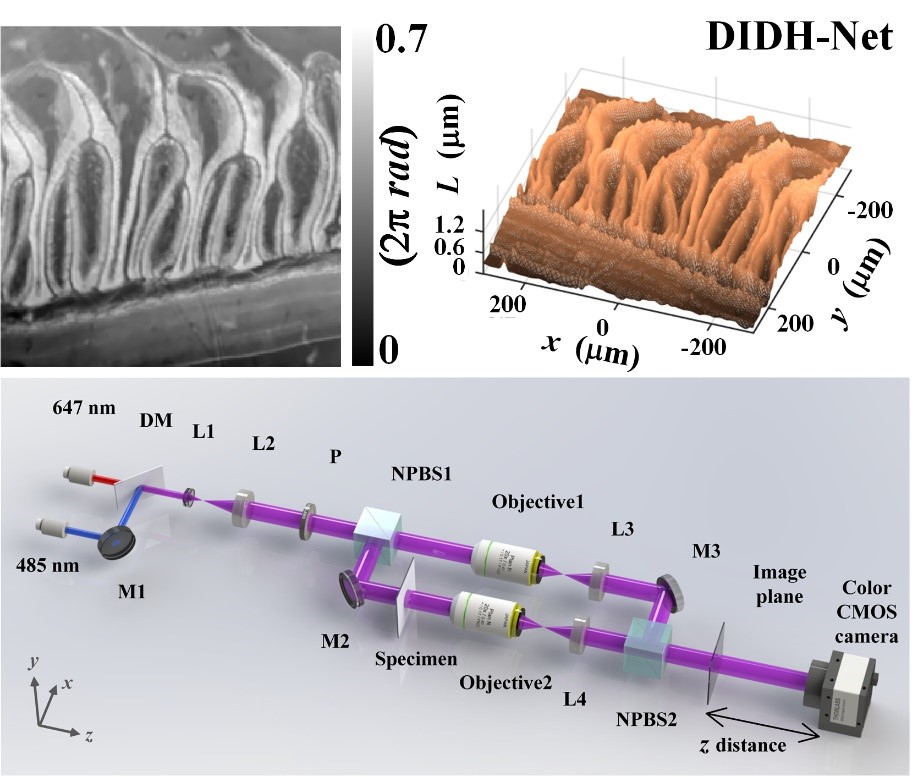Digital holography attracts considerable interest due to its noncontact, label-free, and quantitative imaging characteristics. Through decades of development, it has become higher in accuracy and more compact in configuration. Dual-wavelength and in-line digital holography (DIDH) is one of the advances, whereas it often struggles with amplified noise and twin-image problems.
With the proliferation of deep-learning technique, there has been a boom in neural network-based approaches for digital holography. However, conventional deep-learning networks rely on plenty of training and likely lose generalization capability due to the end-to-end architecture. Without a physical guideline for learning, the networks are prone to be learned slowly or even incorrectly.
A research team led by Prof. YAO Baoli from the Xi'an Institute of Optics and Precision Mechanics (XIOPM) of the Chinese Academy of Sciences recently reported a physics-enhanced and untrained deep-learning network for DIDH, termed DIDH-Net.
DIDH-Net runs on DIDH physics and is therefore very effective, although it does not require training, according to Prof. YAO. This achievement was newly published in Photonics Research.
In contrast to traditional end-to-end networks, DIDH-Net is essentially established by combining the neural network with the specific model for optical DIDH imaging, thereby avoiding the large-scale datasets required for traditional network training.
In addition, it can realize high-resolution and high-precision phase imaging and measurement without additional modification of imaging parameters or operations.
In practice, DIDH-Net can effectively and robustly reconstruct the phase distribution of the target from a single DIDH hologram only by modeling the forward mechanism of imaging. This is mainly due to the physical soul injected into the traditional neural network.
Combined with the characteristics of digital holography and artificial intelligence, DIDH-Net has important application prospects in biomedical research, surface topography measurement and deformation analysis.

DIDH-Net has a physical soul that is more effective in noise suppression and twin-image removal in digital holography. (Image by XIOPM)
Download: